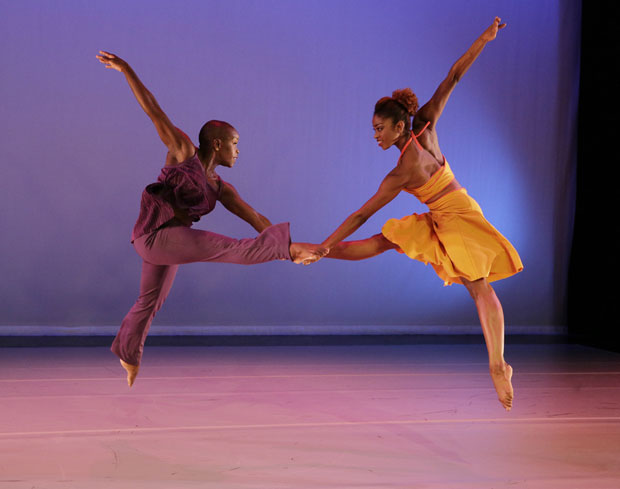
© Paul Kolnik. (Click image for larger version)
Alvin Ailey American Dance Theater
Memoria, The Evolution of a Secured Feminine, Another Night, Revelations
New York, City Center
5 December 2012
www.alvinailey.org
www.nycitycenter.org
The December 5 performance of Alvin Ailey American Dance Theater marked a milestone in Kyle Abraham’s career. Sharing a program with two works by Ailey himself, Abraham – a prolific 35-year-old downtown choreographer – premiered his first piece for the dance powerhouse: Another Night, a rollicking, 20-minute piece set to percussionist Art Blakey’s interpretation of Dizzy Gillespie’s A Night in Tunisia.
In many respects Another Night is a typical Ailey work: its score is upbeat, its costumes are colorful and the dancing is fast and athletic. The piece might be milder than the works Abraham has created for his own company, Abraham.in.Motion, but one can hardly fault him for being diplomatic with his Ailey debut. He knows what this audience wants and capitalizes on the strengths of the dancers.
The atmosphere of Another Night resembles a lively street party. Jacqueline Green smolders as she struts softly across the stage. She reels in Jamar Roberts, and the pair converse through a few hip shakes before leaping and pirouetting in unison. Group dances dissolve into solos and trios, and the dancers pair off for duets, their legs piercing through the air in symmetry. The pace is relentless, almost exhausting, but during one delectable passage – a rare moment of stillness – the entire cast balances on one leg, like a flock of cranes. Suspense builds until they abruptly tip their torsos forward.
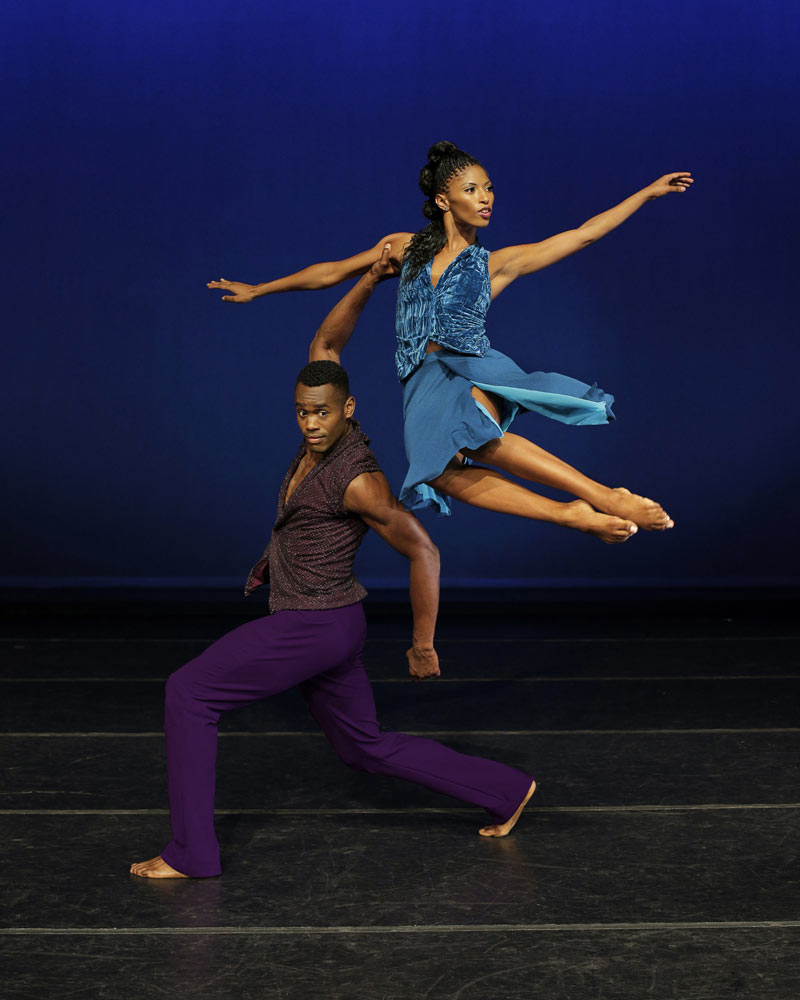
© Paul Kolnik. (Click image for larger version)
Although Abraham occasionally throws in characterization and humor, a number of sections are purely formal. When I interviewed Abraham last week, he mentioned that Merce Cunningham’s Duets had influenced him. There are, indeed, a number of similarities – the partnering-based structure, specific steps and poses, and the color-blocking of the costumes – but Abraham departs from Cunningham by playing with different gender pairings.
The only glaring problem at Wednesday’s premiere was that the cast looked under-rehearsed. During a few particularly fast passages, which called for the highest level of precision, dancers were noticeably out of step. This, I assume, will improve with time.
Another spry work on the program was Camille Brown’s Evolution of a Secured Feminine, a solo deconstructing womanhood that abounds in contrasts between big and small, forceful and soft, strong and vulnerable. (The costume is similarly deconstructed: The dancer wears only half of a blazer, along with a matching jacket and fedora, which she occasionally hides behind.)
To music sung by Ella Fitzgerald, Betty Carter, and Nancy Wilson, Rachael McLaren kicks, stomps, and almost stumbles over herself before planting herself in a chair, a cigar in one hand, and gently running the other hand over her face. Brown’s choreography is too polished to reveal life’s extremes to the fullest, but McLaren is a delight to watch. She dances with wit, charm, and a tinge of irony that begs the audience not to take the solo too seriously.
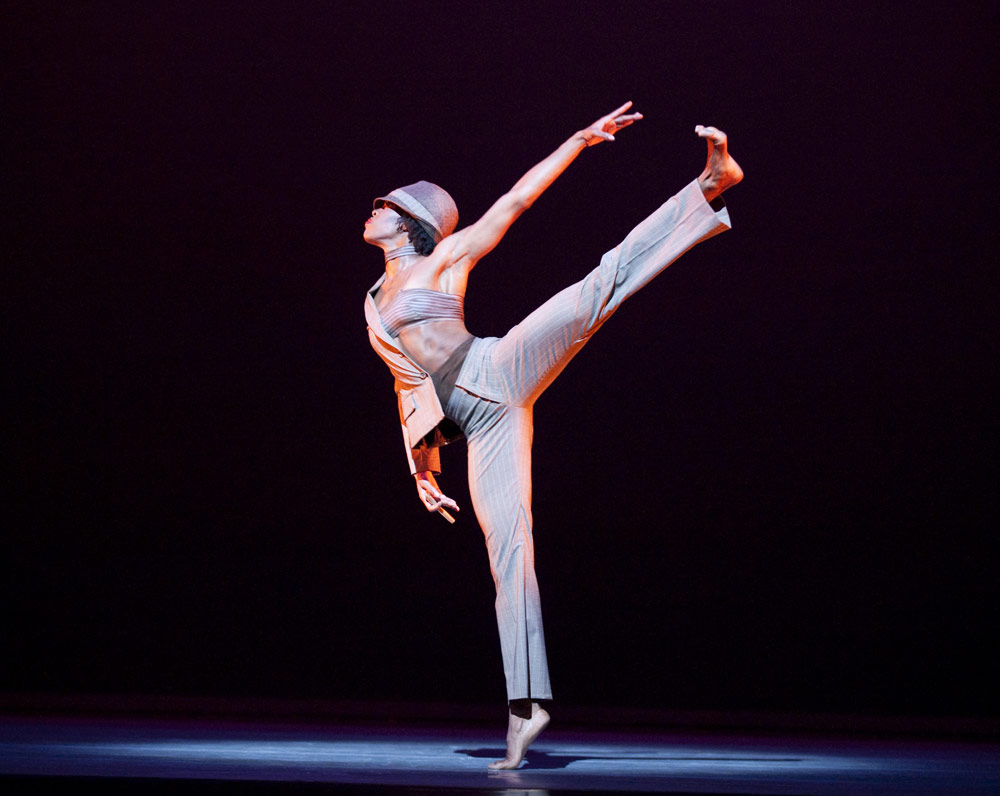
© Nan Melville. (Click image for larger version)
Ailey’s Memoria, which opened the program, was the evening’s weakest work. Made in 1979, the piece serves as a tribute to the dancer, choreographer and teacher Joyce Tristler, who died that same year after a heart attack at age 45, but the work’s noble intentions fail to keep it afloat.
It unfolds in three chapters. In the first, the most elegiac of the three, Linda Celeste Sims seizes the eye with her high arabesques and shifting balances. The mood steadily increases until the final movement, which ends with a large, colorfully dressed corps jiving and lifting Sims – now in a red dress – high into the air.
There are moments when Memoria’s choreography and the dancing impress, but the three passages don’t add up to a cohesive whole. It seemed as though knowledge of Tristler’s work was key to understanding the various costumes and dance references. As someone unfamiliar with her career, I felt shut out of the piece.
The Ailey classic, Revelations, which closed the program (as usual), fared better. More seasoned dancegoers than I claim that the piece is finitely watchable, but after watching six performances I remain awestruck by Ailey’s use of weight and balance to express toil to the most uplifting ends. The music – a suite of spirituals and blues music – is irresistible throughout.
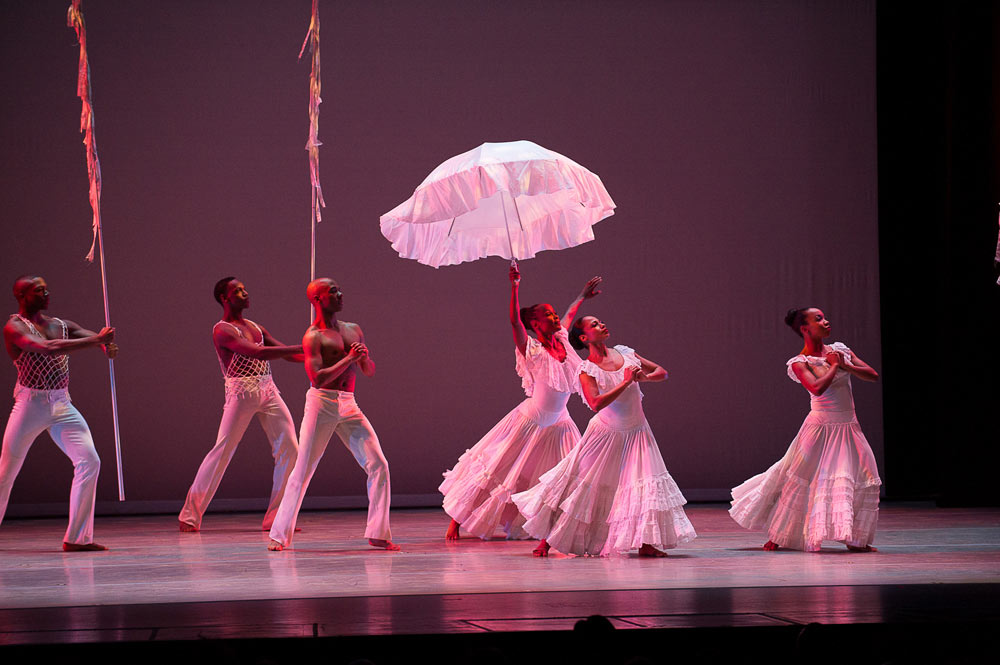
© Christopher Duggan. (Click image for larger version)
The dancing, however, had its highs and lows, with the soloists in particular disappointing. Jamar Roberts has the physical control necessary for the slow backward falls in the solo to “I Wanna Be Ready,” but he adds showy flourishes that are at odds with the choreography’s humility, and the tender “Fix Me, Jesus” duet – usually my favorite part – was oddly cold when danced by Akua Noni Parker and Jermaine Terry.
Best of all was Renee Robinson, who played the woman with the umbrella in the “Take Me to the Water” section. The joy she conveys by undulating one arm and arching her back is astounding, and her presence seemed to energize the other performers, who seemed to dance more tepidly when she left the stage. Her performance made her retirement just days later, after three decades with the company, even more bittersweet.









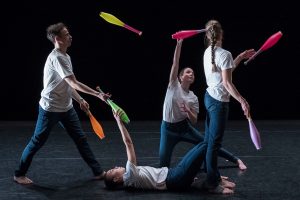
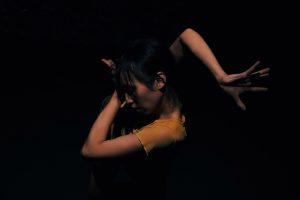



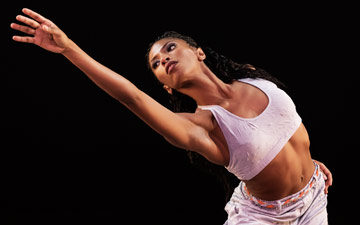

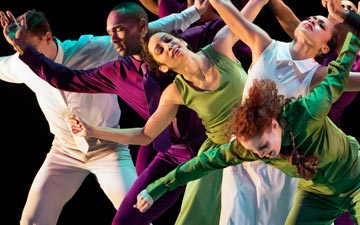
You must be logged in to post a comment.